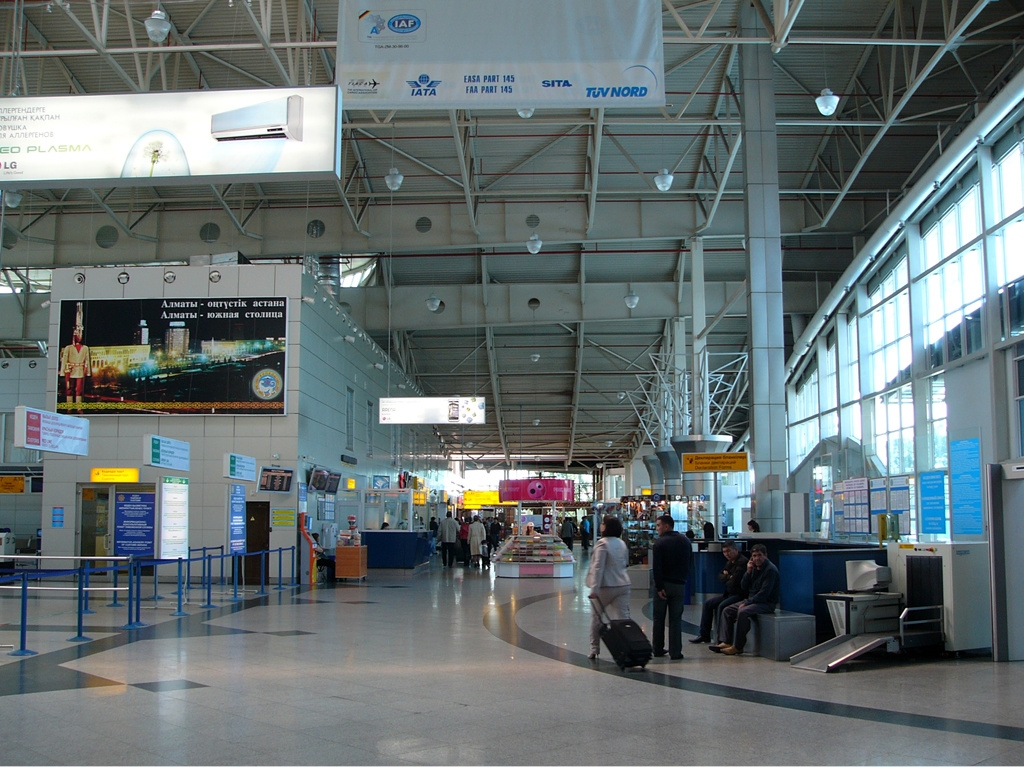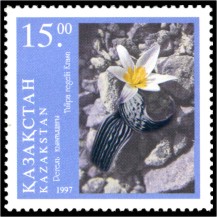|
Trans-Ili Alatau
Ile Alatau ( kk, Ile Alatauy, ''Іле Алатауы''), also spelt as Trans-Ili Alatau, is a part of the Northern Tian Shan mountain system (ancient Mount Imeon) in Kazakhstan and Kyrgyzstan. It is the northernmost mountain range of Tian Shan stretching for about with a maximal elevation of ( Talgar Peak). The term " Alatau" refers to a kind of mountain. The range is bounded from the north by the Ili Depression of the Ili River, hence the name. The former capital of Kazakhstan, Almaty, is located at the foot of the range. The Ile-Alatau National Park is a protected area in the Ile Alatau. Topography The Zailiisky Alatau Range is one of the northernmost arcs of the Tien Shan mountain system. It is located at 43°N, within 75-78°E, partly in Kazakhstan, Kyrgyzstan, and China. The range begins in the west within the Chu River and extends 280 km eastward to the Chilik River. To the north of the axial ridge slopes gently down to the Chu-Ili Range and the Balkhash-Alakol ... [...More Info...] [...Related Items...] OR: [Wikipedia] [Google] [Baidu] |
Almaty International Airport
Almaty International Airport ( kk, Halyqaralyq Almaty Äuejaiy) is a major international airport northeast of Almaty, the largest city and commercial capital of Kazakhstan. It is the busiest airport in Kazakhstan, accounting for 6.42 million passengers in 2019. Owners and management The airport is registered under name of "JSC Almaty International Airport", which is owned by Turkish airport company TAV Airports Holding, as well as many other airports available worldwide. History Early years The airport was built in 1935 for use by small civil and military aircraft. Up to 1990, it was the part of Kazakh Department of Civil Aviation, and then reorganized into "Alma-Ata Airport" in 1991. Since 1993, it has run as an independent business unit. In 1994, it was reorganized into OJSC "Almaty Airport" and later renamed to JSC Almaty International Airport. The supersonic transport (SST) Tupolev Tu-144 began service on 26 December 1975, flying mail and freight between Moscow and ... [...More Info...] [...Related Items...] OR: [Wikipedia] [Google] [Baidu] |
Chu-Ili Range
The Chu-Ili Range ( kk, Шу-Іле таулары) is a range of mountains in Kazakhstan. Administratively it is part of the Almaty Region, Almaty and Zhambyl Region, Zhambyl regions. The M36 Highway (Kazakhstan), M36 Highway skirts the range along its northeastern flank.Google Earth Geography The Chu-Ili Range is ancient and heavily eroded. It is part of the Trans-Ili Alatau, a northern extension of the Tian Shan. It begins to the north of Otar (village), Otar, west of the Kurty, one of the main tributaries of the Ili (river), Ili river, and stretches in a roughly northwestern direction for less than . The Chu River flows to the west of the range and to the northeast stretches the Taukum desert of the Balkhash-Alakol Basin. The highest point of the range is Anyrakay (Аңырақай), a high summit. Aytau is a subrange in the northern section. Its highest point is high Mount Sunkar, Sunkar, located in the Khantau Massif, right to the east of Khantau village. The Maizharylga ... [...More Info...] [...Related Items...] OR: [Wikipedia] [Google] [Baidu] |
Mountain Ranges Of Kazakhstan
A mountain is an elevated portion of the Earth's crust, generally with steep sides that show significant exposed bedrock. Although definitions vary, a mountain may differ from a plateau in having a limited summit area, and is usually higher than a hill, typically rising at least 300 metres (1,000 feet) above the surrounding land. A few mountains are isolated summits, but most occur in mountain ranges. Mountains are formed through tectonic forces, erosion, or volcanism, which act on time scales of up to tens of millions of years. Once mountain building ceases, mountains are slowly leveled through the action of weathering, through slumping and other forms of mass wasting, as well as through erosion by rivers and glaciers. High elevations on mountains produce colder climates than at sea level at similar latitude. These colder climates strongly affect the ecosystems of mountains: different elevations have different plants and animals. Because of the less hospitable terrain and ... [...More Info...] [...Related Items...] OR: [Wikipedia] [Google] [Baidu] |
Peaks Of Trans-Ili Alatau In Almaty Region
The peaks and mountain passes of Trans-Ili Alatau bear the names of different explorers, cosmonauts, revolutionaries, pilots, statesmen, and other prominent figures. Namings also come from names of forms and reliefs - Trapezium, Window (Taschoky), Raw, Rocky, Stony, etc. The highest point of the Trans-Ili Alatau ridge is Talgar Peak - about 4,980 meters. Some of the peaks and summits of Trans-Ili Alatau are Talgar Peak, Sergo Ordzhonikidze Peak, Youth Peak, Mayakovsky Peak, Antikainen Peak, Zoya Kosmodemyanskaya Peak, M. Mametova Peak, Big Alma Peak, Kumbel Peak, Titov Peak, Ozerny Peak, Khan-Tengri Peak, Tuyuksu Peak (Tuyuksu Glacier). List of peaks and summits Antikainen peak Located between the peaks of Otechestvennaya Voina and Manshuk Mametova. The peak was named after Toivo Antikainen, a Finnish politician, one of the organizers and leaders of the Communist Party of Finland. The peak is shaped like a pointed tower 4,000 meters high and rises 6–7 meters above the ri ... [...More Info...] [...Related Items...] OR: [Wikipedia] [Google] [Baidu] |
Paul Robeson
Paul Leroy Robeson ( ; April 9, 1898 – January 23, 1976) was an American bass-baritone concert artist, stage and film actor, professional football player, and activist who became famous both for his cultural accomplishments and for his political stances. In 1915, Robeson won an academic scholarship to Rutgers College. While at Rutgers, he was twice named a consensus All-American in football and was the class valedictorian. He received his LL.B. from Columbia Law School while playing in the National Football League (NFL). After graduation, he became a figure in the Harlem Renaissance with performances in ''The Emperor Jones'' and '' All God's Chillun Got Wings''. Robeson performed in Britain in a touring melodrama, ''Voodoo'', in 1922, and in ''Emperor Jones'' in 1925. In 1928, he scored a major success in the London premiere of ''Show Boat''. Living in London for several years with his wife Eslanda, Robeson continued to establish himself as a concert artist and starred ... [...More Info...] [...Related Items...] OR: [Wikipedia] [Google] [Baidu] |
Microclimate
A microclimate (or micro-climate) is a local set of atmospheric conditions that differ from those in the surrounding areas, often with a slight difference but sometimes with a substantial one. The term may refer to areas as small as a few square meters or square feet (for example a garden bed or a cave) or as large as many square kilometers or square miles. Because climate is statistical, which implies spatial and temporal variation of the mean values of the describing parameters, within a region there can occur and persist over time sets of statistically distinct conditions, that is, microclimates. Microclimates can be found in most places but are most pronounced in topographically dynamic zones such as mountainous areas, islands, coastal areas. Microclimates exist, for example, near bodies of water which may cool the local atmosphere, or in heavy urban areas where brick, concrete, and asphalt absorb the sun's energy, heat up, and re-radiate that heat to the ambient air: t ... [...More Info...] [...Related Items...] OR: [Wikipedia] [Google] [Baidu] |
Eurasia
Eurasia (, ) is the largest continental area on Earth, comprising all of Europe and Asia. Primarily in the Northern and Eastern Hemispheres, it spans from the British Isles and the Iberian Peninsula in the west to the Japanese archipelago and the Russian Far East to the east. The continental landmass is bordered by the Atlantic Ocean and Africa to the west, the Pacific Ocean to the east, the Arctic Ocean to the north, and by Africa, the Mediterranean Sea, and the Indian Ocean to the south. The division between Europe and Asia as two continents is a historical social construct, as many of their borders are over land; thus, in some parts of the world, Eurasia is recognized as the largest of the six, five, or four continents on Earth. In geology, Eurasia is often considered as a single rigid megablock. However, the rigidity of Eurasia is debated based on paleomagnetic data. Eurasia covers around , or around 36.2% of the Earth's total land area. It is also home to the largest ... [...More Info...] [...Related Items...] OR: [Wikipedia] [Google] [Baidu] |
Continental Climate
Continental climates often have a significant annual variation in temperature (warm summers and cold winters). They tend to occur in the middle latitudes (40 to 55 north), within large landmasses where prevailing winds blow overland bringing some precipitation, and temperatures are not moderated by oceans. Continental climates occur mostly in the Northern Hemisphere due to the large landmasses found there. Most of northern and northeastern China, eastern and southeastern Europe, Western and north western Iran, central and southeastern Canada, and the central and northeastern United States have this type of climate. Continentality is a measure of the degree to which a region experiences this type of climate. In continental climates, precipitation tends to be moderate in amount, concentrated mostly in the warmer months. Only a few areas—in the mountains of the Pacific Northwest of North America and in Iran, northern Iraq, adjacent Turkey, Afghanistan, Pakistan, and Central Asia� ... [...More Info...] [...Related Items...] OR: [Wikipedia] [Google] [Baidu] |
Balkhash-Alakol Basin
The Balkhash-Alakol Basin or Balkhash-Alakol Depression( kk, Балқаш-Алакөл ойысы; rus, Балхаш-Алакольская котловина), is a flat structural basin in southeastern Kazakhstan.Балхаш-Алакольская котловина '''' in 30 vols. — Ch. ed. . - 3rd ed. - M. Soviet Encyclopedia, 1969-1978. (in Russian) |
Chu River
The Chu (Shu or Chüy) ( kk, Шу, Shu, شۋ; ky, Чүй, Chüy, چۉي; dng, Чў, Chwu (from , ''Chǔ''); russian: Чу, Chu) is a river in Northern Kyrgyzstan and Southern Kazakhstan. Of its total length of ,Чу (река) the first 115 kilometres are in Kyrgyzstan, then for 221 kilometres the river is the border between Kyrgyzstan and Kazakhstan and the last 731 kilometres are in Kazakhstan. It is one of the longest s in Kyrgyzstan and in Kazakhstan. It has a drainage basin of . The |
Kazakhstan
Kazakhstan, officially the Republic of Kazakhstan, is a transcontinental country located mainly in Central Asia and partly in Eastern Europe. It borders Russia to the north and west, China to the east, Kyrgyzstan to the southeast, Uzbekistan to the south, and Turkmenistan to the southwest, with a coastline along the Caspian Sea. Its capital is Astana, known as Nur-Sultan from 2019 to 2022. Almaty, Kazakhstan's largest city, was the country's capital until 1997. Kazakhstan is the world's largest landlocked country, the largest and northernmost Muslim-majority country by land area, and the ninth-largest country in the world. It has a population of 19 million people, and one of the lowest population densities in the world, at fewer than 6 people per square kilometre (15 people per square mile). The country dominates Central Asia economically and politically, generating 60 percent of the region's GDP, primarily through its oil and gas industry; it also has vast mineral ... [...More Info...] [...Related Items...] OR: [Wikipedia] [Google] [Baidu] |






